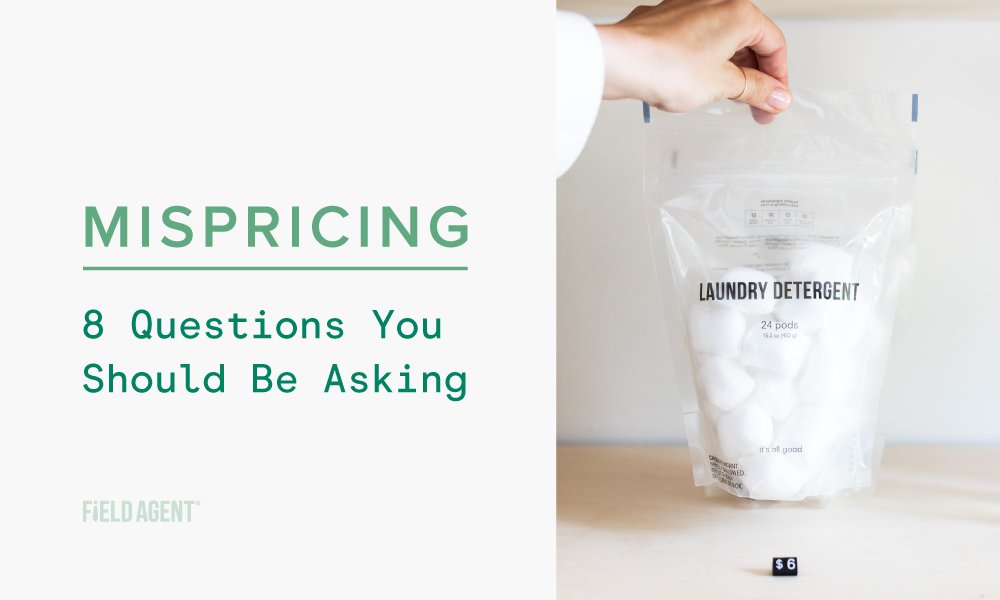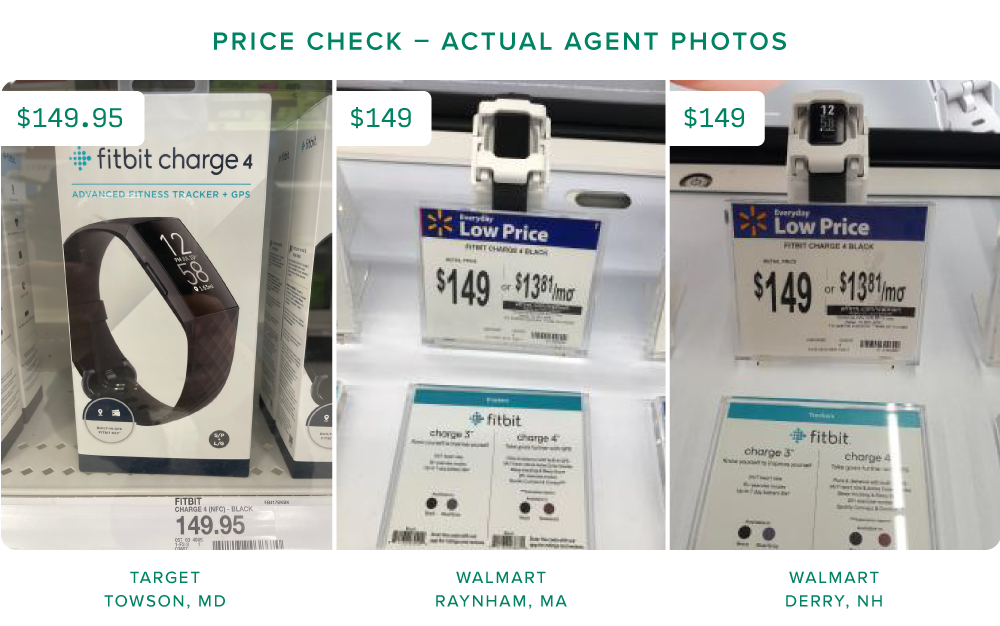
8 Reasons Your Products May Reflect the WRONG Prices in Stores
It may be small, but it’s extremely powerful.
It’s the humble price tag.
With one passing glance, a price tag can make a sale… or lose a customer.
An unappealing price hurts sales in two ways: not only will you lose an immediate sale, but if the shopper makes a final determination about your brand, you may also say goodbye to them for life.
Given the power of price, brands work hard to ensure their prices hit the sweet spot with shoppers.
But here’s a scary question: how do you know shoppers are seeing the right prices in stores? Retail partners might, after all, misprice your products, leaving you and others wondering why sales are so disappointing.
If you suspect your products may be mispriced in stores (and on ecommerce platforms), here are eight questions you should be asking.
Are My Products Priced Incorrectly? 8 Questions You Should Be Asking
Most pricing errors stem from the same common causes. To identify where your strategy or execution is falling short, here are eight questions to ask about pricing.
1. Is human error to blame?
This is perhaps the most obvious reason: your products may simply be mispriced due to human error. For example:
- Price tags could be misprinted
- Employees can miss SKUs when adjusting prices
- Employees might accidentally overlook information about pricing changes
Of course, high turnover, insufficient training, or other structural labor issues contribute to these issues. Some stores have more staff (or better-trained staff) than others.
2. Are stores intentionally changing prices?
Your products may be mispriced due to pressures and realities at the store level.
Local store managers, faced with unique challenges and opportunities, may deviate from MSRPs and corporate pricing plans in unexpected ways. For instance, they may be eager to unload high inventory, and discount prices on your goods in the process.
3. Is the timing right?
Timing is everything in the pricing game, particularly in non-EDLP (everyday low price) contexts.
A “correct” price too early or too late may actually be an incorrect price. For instance, if local stores are tardy applying holiday prices, retailers and brands may miss important sales.
4. Are stores getting accurate pricing information?
Garbage in, garbage out.
The old saying certainly applies to pricing management. Store employees sometimes report inaccurate information - such as pricing changes that never occurred.
Issues like this lead to misalignment between the data reported by the retailer’s information systems and the reality on the store floor. And too often, reconciliation doesn’t occur until long after valuable sales have been lost.
5. Are my point-of-purchase materials missing?
Sometimes expensive POP materials—including those with an accompanying price promotion—don’t make it to the final retail destination. Whether it’s a delivery error or an execution mistake, they’re not there.
While this isn’t a clear-cut case of mispricing, it is a situation where shoppers may be less enticed to purchase your products because key pricing information isn't available.

6. Are my prices competitive?
It’s not always your retail partners making the pricing mistakes.
Competitive pricing is crucial: If you’re over- or under-pricing your products (relative to your competitors and the category at large), then you’ll certainly miss out on dollars or sales.
When there’s a pricing misalignment, you miss the mark with cost-sensitive, purchase-ready shoppers.
This danger is especially real for new products. They need to work especially hard to drive trial and overcome existing shopping and consumption routines.
The price must be on the money if your brand is to stack up favorably against rivals.
7. Are my prices right online?
We know that prices can be wrong in-store, but you might be surprised to find misaligned prices on ecommerce channels.
Our colleagues at Field Agent US recently published a guide to success on Walmart.com, which reports the results of a SKU pricing analysis, revealing drastic pricing variation for the same SKU from one store to another.
Is your price the right price across the board?
8. Do I have good visibility to my prices?
But there's good news: The problems above can be overcome with greater visibility in-store and greater awareness of what's happening online.
It really boils down to vigilance—knowing the prices on your in-store products (and your rivals') at any given time.
After all, you can’t fix what you can’t see.
Retail Solutions for Any Pricing Challenge
No matter the pricing challenge, Field Agent has a solution.
From on-shelf price checks to price sensitivity, we offer tools to give you rapid visibility to real price tags on store shelves - no matter where they are.


